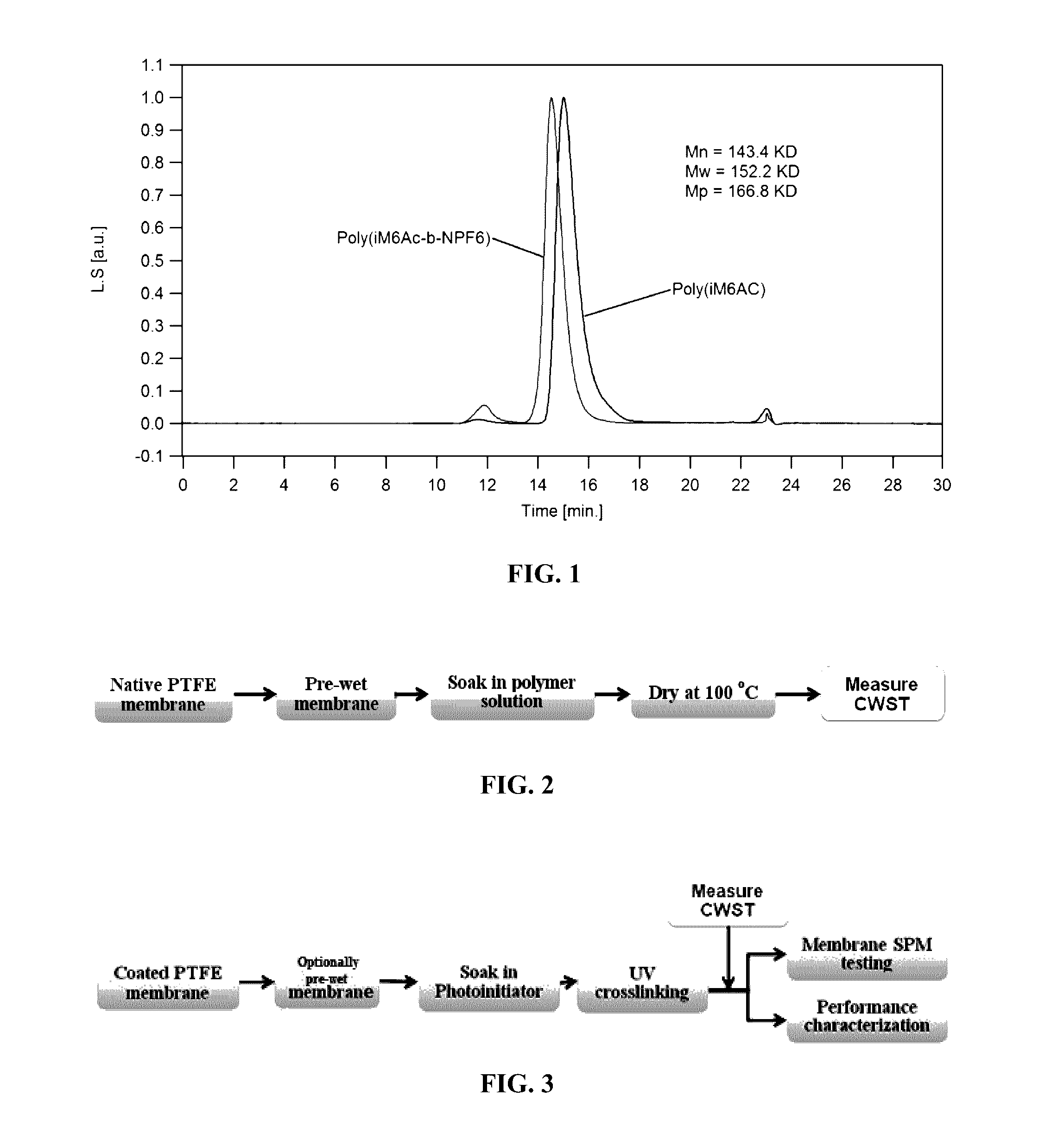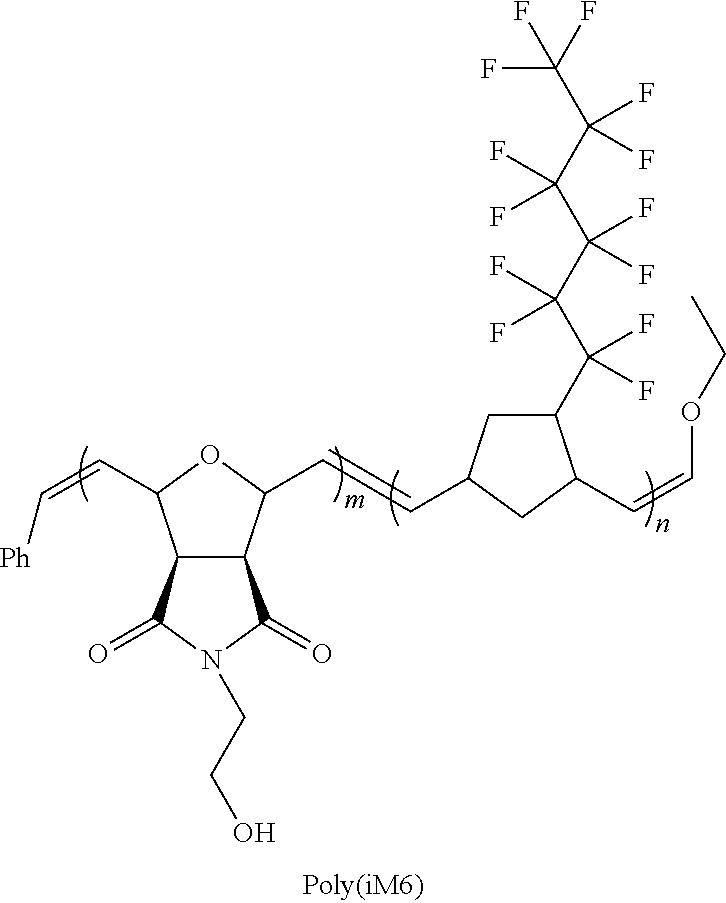Hydrophilically modified fluorinated membrane (IV)
a technology of fluorinated membrane and hydrophilic modification, which is applied in the field of fluoropolymer membrane properties, can solve the problems of reducing the mechanical and chemical stability of the ptfe membrane and being less stable over a long period of tim
- Summary
- Abstract
- Description
- Claims
- Application Information
AI Technical Summary
Benefits of technology
Problems solved by technology
Method used
Image
Examples
example 1
Materials
[0071]The following materials were purchased and used as received.
[0072]Dimethyl 5-norbornene-2,3-dicarboxylate (C3) was purchased from Alfa Aesar,
[0073]Dichloromethane (DCM) was stored over activated Alumina and purged with Argon before use, Isopropyl alcohol (IPA), dicyclopentadiene (DCPD), 1H,1H,2H-Perflouro-1-octene (PF6), 1H,1H,2H-Perflouro-1-dodecene (PF10), toluene, thionyl chloride, ethylacetate, dimethylformamide (DMF), Maleimide, furan, diisopropylazodicarboxylate (DIAD), triphenylphosphine (Ph3P), 1-haxadecanol, tetrahydrofuran (THF), ethyl acetate, N-phenylmaleimide, acetonitrile, methanol, Grubbs second generation catalyst, 3-bromopyridine, and pentane were obtained from Sigma-Aldrich Co. and used without further treatment. Dichloropentane, also obtained from Sigma-Aldrich Co., was treated with basic alumina before use. Cyclooctadiene (COD) was purified by vacuum distillation from borane in tetrahydrofuran and used fresh.
example 2
[0074]This example illustrates the preparation of dichloro[1,3-bis(2,4,6-trimethylphenyl)-2-imidazolidinylidene](benzylidene)bis(3-bromopyridine)ruthenium(II) (G3) catalyst.
[0075]The second generation Grubbs catalyst (G2) illustrated above (1.0 g, 1.18 mmol) was mixed with 3-bromopyridine (1.14 mL, 11.8 mmol) in 50 mL flask. Upon stirring at room temperature for 5 min, the red mixture turned into bright green. Pentane (40 mL) was added with stirring for 15 minutes and green solid was obtained. The mixture was cooled in the freezer for 24 h and filtered under vacuum. The resulting G3 catalyst, a green solid, was washed with cold pentane and dried under vacuum at room temperature to give a yield of 0.9 g, 88% yield.
example 3
[0076]This example illustrates the gel permeation chromatographic characterization of the homopolymer and copolymers in accordance with an embodiment of the invention.
[0077]The homopolymer and block copolymer obtained was characterized for their molecular weight and molecular weight distribution properties by the MALS-GPC technique under the following conditions:
[0078]Mobile phase: Dichloromethane (DCM).
[0079]Mobile phase temperature: 30° C.
[0080]UV wavelength: 245 nm.
[0081]Columns used: three PSS SVD Lux analytical columns (styrene-divinylbenzene copolymer network), columns having as stationary phase beads of diameter 5 μm and pore sizes of 1000 A, 100,000 A, and 1,000,000 A, and guard columns.
[0082]Flow rate: 1 mL / min.
[0083]GPC system: waters HPLC alliance e2695 system with UV and RI detectors
[0084]MALS system: The DAWN HELEOS 8 system with 8 detectors operating a laser at 664.5 nm.
PUM
| Property | Measurement | Unit |
|---|---|---|
| molecular weight | aaaaa | aaaaa |
| molecular weight | aaaaa | aaaaa |
| molecular weight | aaaaa | aaaaa |
Abstract
Description
Claims
Application Information
 Login to View More
Login to View More - R&D
- Intellectual Property
- Life Sciences
- Materials
- Tech Scout
- Unparalleled Data Quality
- Higher Quality Content
- 60% Fewer Hallucinations
Browse by: Latest US Patents, China's latest patents, Technical Efficacy Thesaurus, Application Domain, Technology Topic, Popular Technical Reports.
© 2025 PatSnap. All rights reserved.Legal|Privacy policy|Modern Slavery Act Transparency Statement|Sitemap|About US| Contact US: help@patsnap.com



